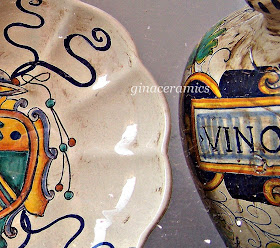You might recall my list of pet peeves
of a few weeks ago.
Tina of The Enchanted Home, listed several pet peeves but the best of them was "people who talk really loud on their cell phones..."
Tina, please choose your prize from any of these
A Baker's Dozen of my hand printed little cotton drawstring bags.
OR
A hand painted door sign
OR
A vintage Lace handkerchief.
OR
An assortment of my famous organically grown fruit preserves in jars with hand painted labels.
Thank you Tina for participating.
Gina
of a few weeks ago.
Tina of The Enchanted Home, listed several pet peeves but the best of them was "people who talk really loud on their cell phones..."
Tina, please choose your prize from any of these
A Baker's Dozen of my hand printed little cotton drawstring bags.
OR
A hand painted door sign
OR
Custom hand painted for you.
OR
A vintage Lace handkerchief.
OR
An assortment of my famous organically grown fruit preserves in jars with hand painted labels.
Thank you Tina for participating.
Gina



















































